Click on Charmouth Home to return back.
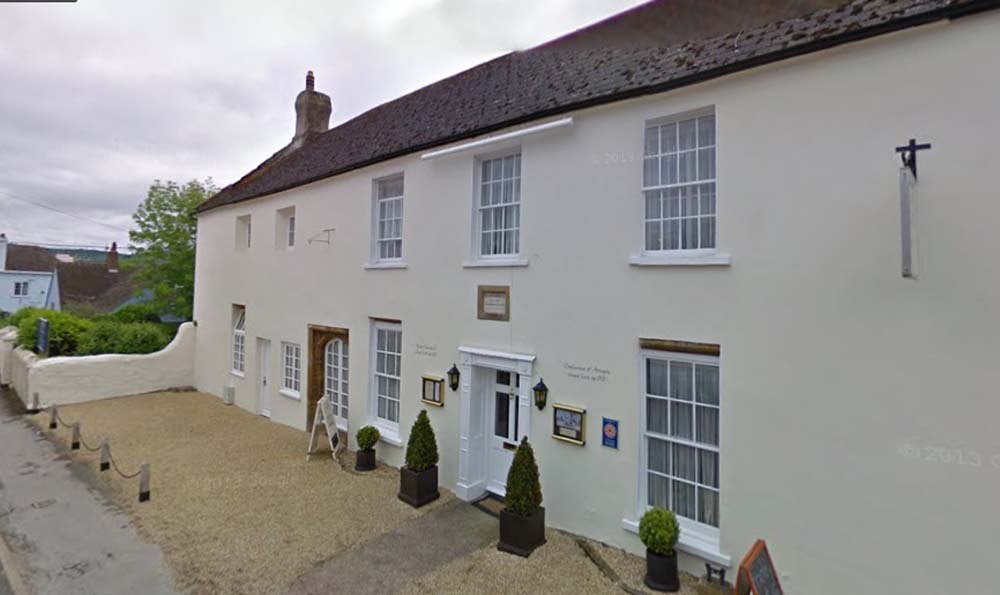
William Bowdythe holds by copy dated 22 Jul 1546, a messuage or cottage and 2 acres of land viz; a curtilage and le Common close.for lives of himself and brother Robert; fine 40s , rent 20s ‘this is fairest house [in] the town and buylded by the last abbot of Foorde.’ This house granted to Roger Collwill and his children, Nicholas and Rebecca, by copy 28 1561; fine £6.
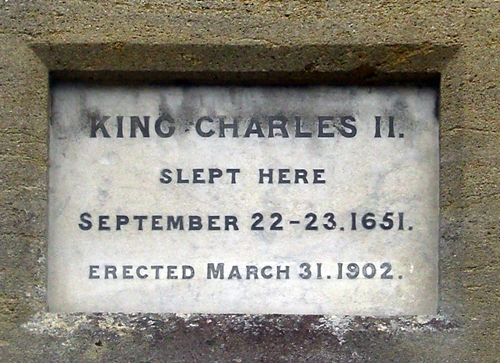
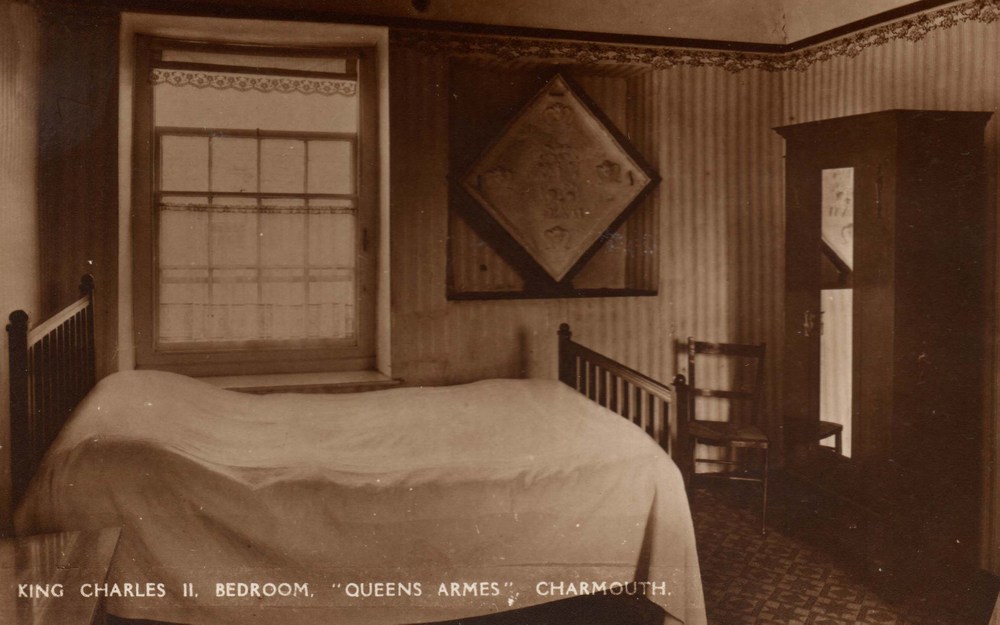
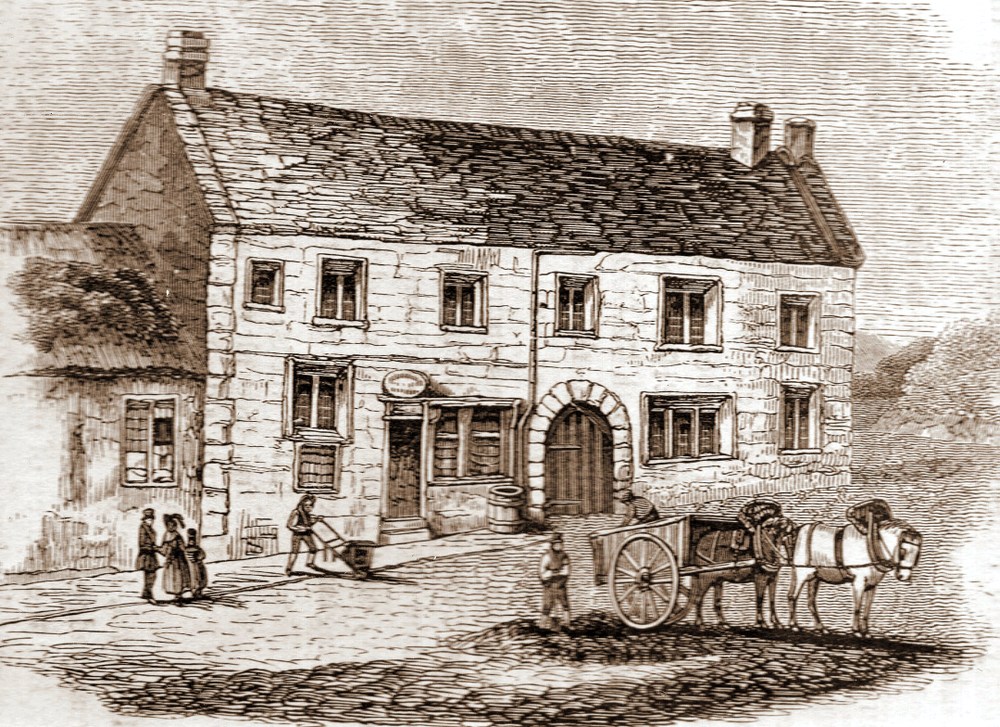


.jpg)


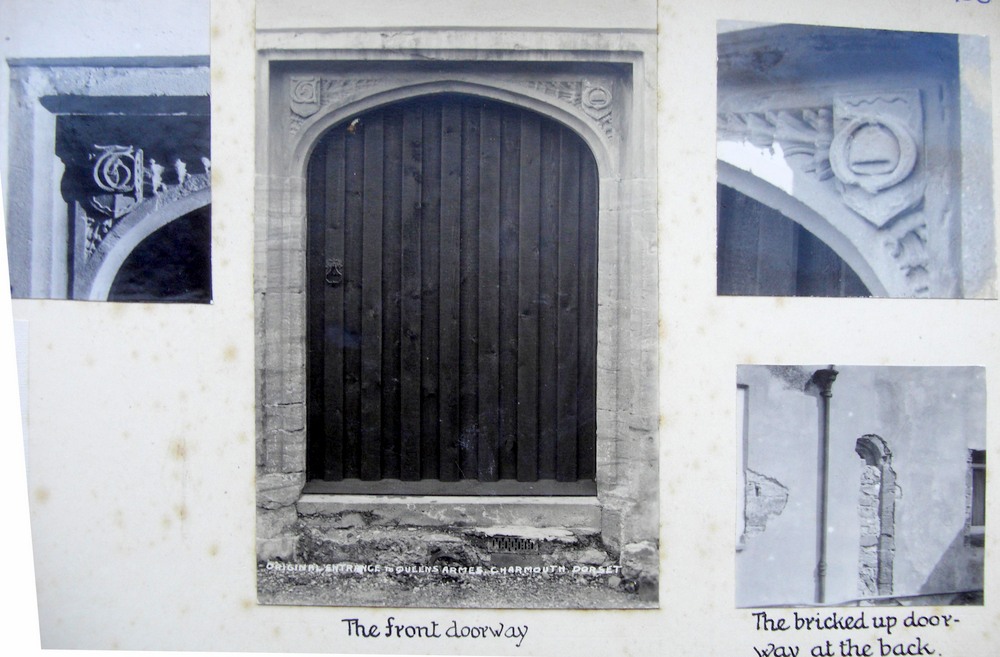
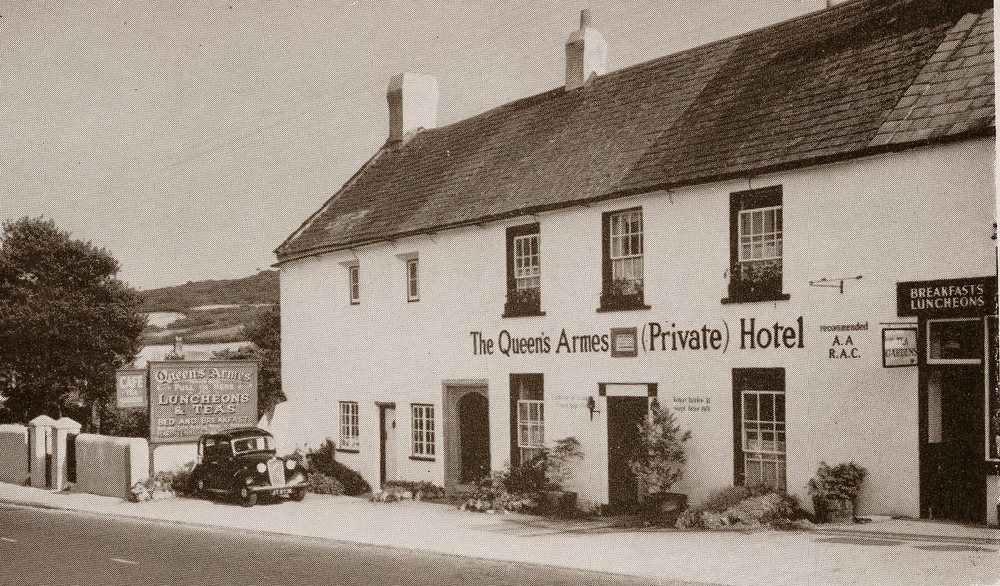



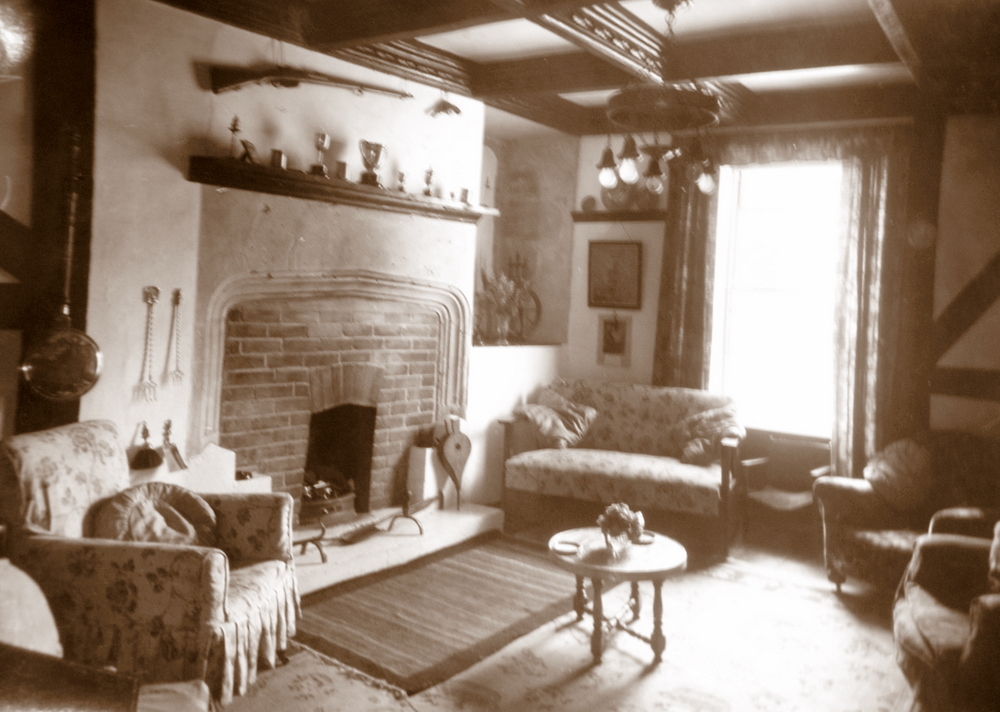
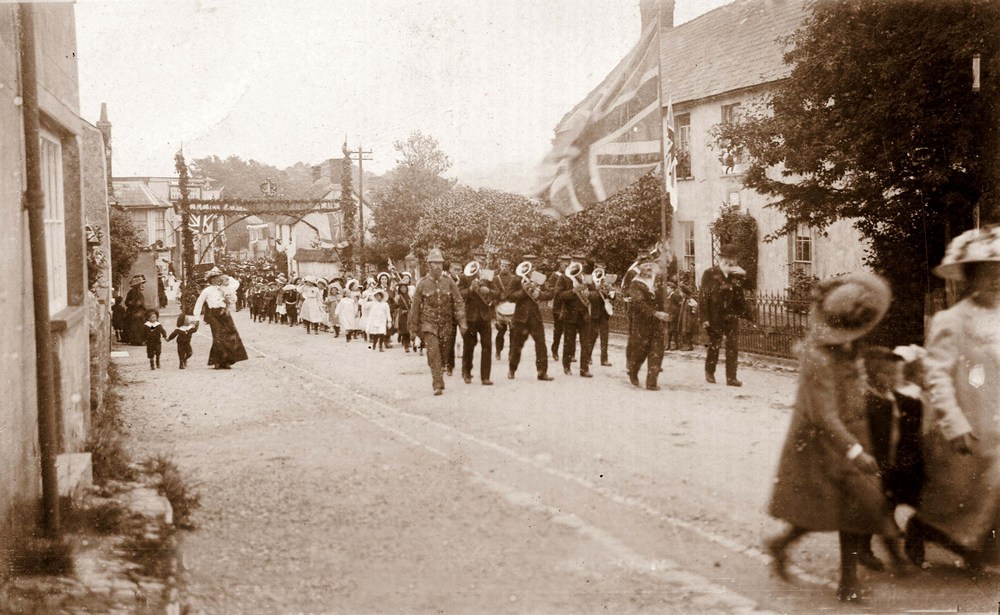
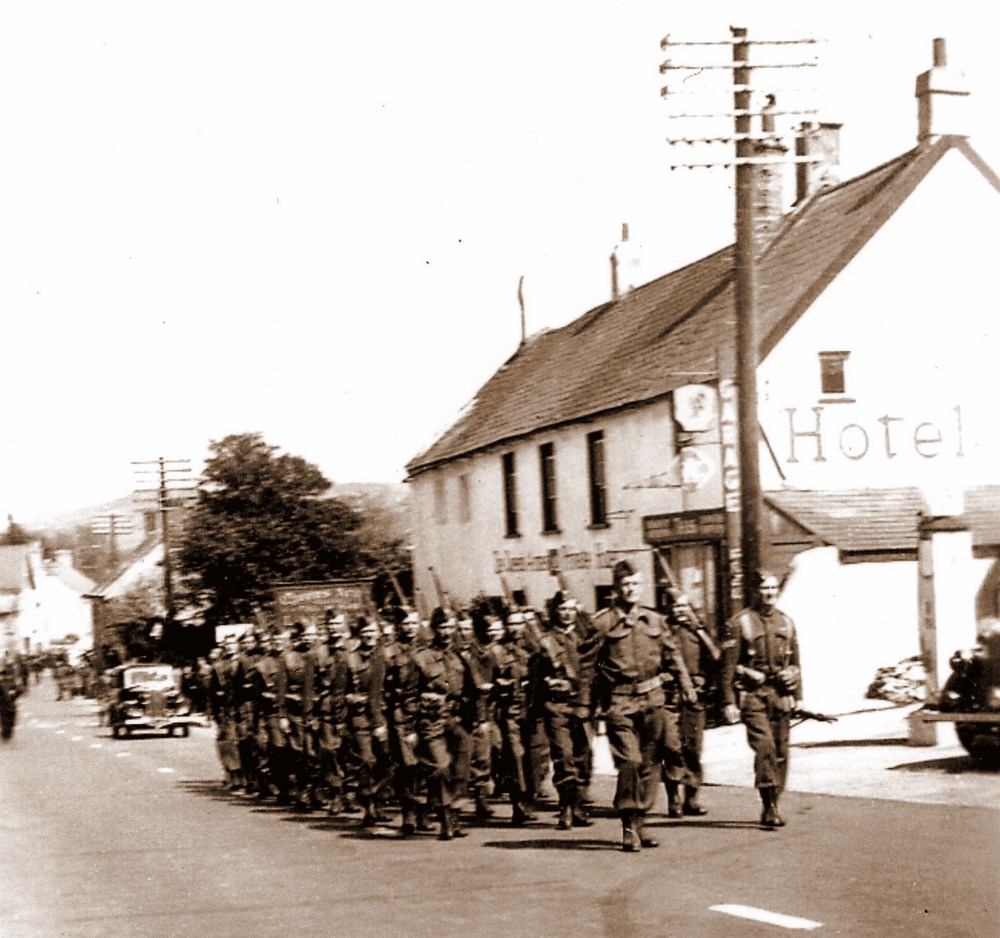
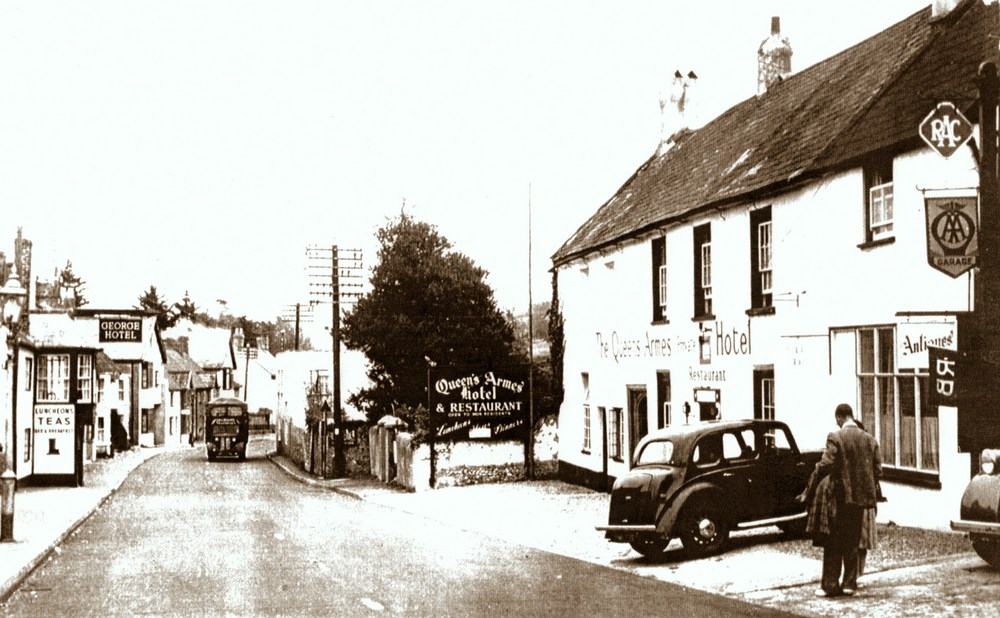

"The Queen's Arms". The name suggests that Queen Catherine of Aragon stayed here, but the County Record Ofiice has no such record and C.Wanklyn told me that her route from Plymouth was not planned to pass through Charmouth, so I leave it at that. The house is sixteenth century and was built by an Abbot of Forde probably as a guest house. Entrance was made through a Tudor doorway to a passage with a doorway which was not so ornate, into the garden. On the left of the passage, as you entered, was a doorway leading to the kitchen. Here was a large fireplace with an oven (the latter was discovered in 1945 by W.Mills) and a door in the south wall. On the right of the passage a door led to a large room, with an open fireplace, which included the present entrance hall. Beyond was a smaller room with a window looking up the struct and another looking into the garden. The panelling was ornamented with poppies and candle flowers, which may have been the work of some wayfarer, and traces of which cr.n still be seen. A Tudor fireplace was in the west wall. The doorway into the house may have been built when Thomas Chard was Abbot of Forde if the initials T.C. on the eastern spandrel refer to him. Upstairs ,not the present staircase, the bedrooms have Tudor fireplaces. In the seventeenth century it was an inn, patronised we are told by caveliers and here King Charles II stayed whilst waiting for Stephen Limbry to take him to France. (The King never hid in the kitchen chimney as we were asked to believe) A hamstone chimney piece with the initials C.R. was put up after the Restoration, which was covered over with plaster some time after 1815.
Roberts, in his history of Charmouth, says that towards the end of the seventeenth century the house was owned by Mrs. Ployer, widow of Anthony Ployer of Berne Manor, Whitechurch Canonicorum. She gave shelter to the Rev.John Brice, who had been ejected from the Marshwood living, which was a hamlet of Whitechurch Canouicorum. There was at that time a thatched cottage with mud walls at the east end which is now the chapel burying ground and this was turned into a chapel for Brice. At one end were folding doors leading into the house, which could be opened when Brice preached and quickly closed if an informer appeared. There was also a secret hiding place, so often confused with King Charles hiding in the chimney. After the revolution Brice publicly opened the chapel which existed until 1815, and in his latter days he married Grace Ployer. He died in 1716. Thus the house became the home of Charmouth non-conformist ministers. Mrs. Ployer died in 1675 aged 79. In her will she left John Brice £10 and two pairs of sheets and a bed, bolster and down pillow and two books. She had made over the house to her daughter in 1673. It is worth noting, that the minister of Charmouth, Bartholomew Wesley was deprived of his living when Brice had to leave Marshwood.
At the turn of the nineteenth century the house suffered many changes. The Tudor entrance was bricked up: the kitchen and a small room was shut off making a seperate cottage. A front door with an entrance hall was made by taking part of the larger room in which a more modern fireplace was built halfway across the east wall with a brick chimney, which made its way through the bedroom above blocking a plaster plaque on the wall except for two corners, this room for many years afterwards was supposed to have been where Charles II had slept and that the hidden plaque was his coat of arms. Fireplaces in other bedrooms replaced the old Tudor ones. Downstairs the small panelled room was not altered except the two windows, which looked west and south, were bricked up and another overlooking the street made instead. In 1813 the Rev. B.James was appointed minister and he may have been responsible for the alterations. It is known that he pulled down the 120 years old thatched chapel, which was in a ruinous state, and built a more substantial building in 1815. In order to increase his stipend he opened a school for boys so as to accomodate them he built two rooms and a staircase on the west end which necessitated bricking up the original windows in the panelled room. Among the pupils in the school were Henry Alford, son of a clergyman living at Curry Rivel, Somerset, who afterwards became Dean of Canterbury and James Lethbridge Templer, who went at the age of six and later was Commander of the "Minerva", East Indiaman,he died 13th August 1838 aged 55 and was buried beneath 'the floor of the pulpit in the chapel which he had built. Galpin, drawing master made several sketches of the building in James`s time and reconstructed the doorway and windows as he imagined they had been before the alterations.
The building remained the residence of the chapel minister until 1931. The kitchen portion was occupied by Mr.and Mrs. Lional White and family. It was not a comfortable dwelling house. It included the room between the kitchen and the room on the left of the modern front door. A modern range filled the space of the open fireplace with cupboards on either side in which one could stand and look up the chimney and imagine the King hiding there. A staircase led upstairs to the bedrooms which were shut off from the rest of the house. Inside the kitchen door on the right was a recess which, it was said, was used when it was an Inn in former days. In or about 1931 the whole house was purchased by Stapleforth of Lyme Regis, who removed the railing in front of the western portion and the wall in front of the cottage. A doorway was opened botween the kitchen and the rest of the house and when the plaster and brickwork of the recess was attacked by iron bars a cavity was discovered which revealed the Tudor doorway. The former manse then took on a new appearance. The fireplaces were restored in the sitting rooms and bedrooms and when the kitchen chimney and fireplace were opened out the old oven was discovered. The western end which had been added by Joannes became Tea rooms and the plastered up window of the panelled room was visible once more.